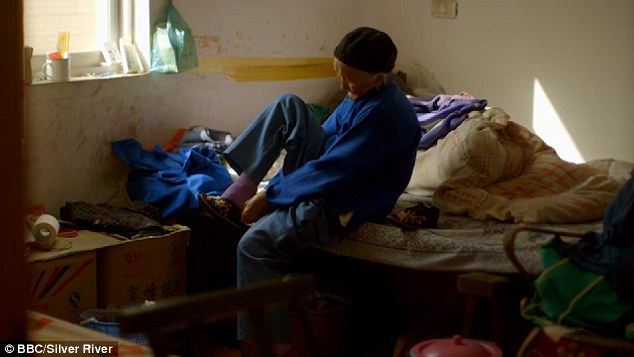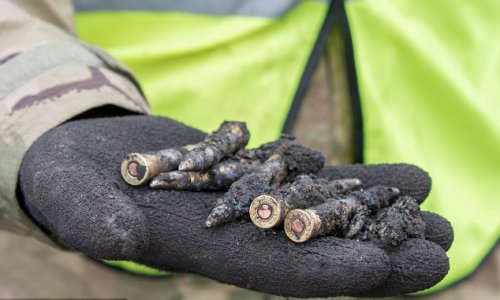A Chinese woman has revealed how she endured having her feet bound when she was only six years old, even though the painful procedure had been outlawed.
Wang Huiyuan, now 84, who lives in the rural Tonghai County, Yunnan, had the 'beauty treatment' in the 1930s, decades after it had been officially banned in 1902.
'Then it was fashionable to bind feet. Everyone did it. If not, you'd be laughed at, "look at her big, flat feet". Once I was laughed at, I bound my feet,' she explained to Dr Amanda Foreman on BBC documentary The Ascent Of Woman.
The octogenarian recalled how the process of binding her feet to make them smaller - an ancient practice that can be dated back to the 13th century - was unbearably painful.
She said: 'I was six or seven when I started binding, helped by my mum. Once bound I'd shout "no more binding, no more binding!"
'After binding, it hurt, especially at night. I would scream, "loosen up, loosen up!"
'They were bound for a while then loosened for a bit. So my feet didn't end up that small.'
Dr Foreman explains in more detail exactly what was involved to ensure the feet did not grow and remained desirably small and dainty.
The process itself was excruciating,' she said. 'Starting as young as five, mothers cracked the bones of their daughters feet almost in half. They forcibly folded their toes under and swaddled them in a set of bandages which were ever more tightly bound over a number of years.'
The historian reveals how the tortuous act became a cultural norm for centuries founded on 'ideals of beauty that advocated chastity and immobility'. They were a 'mark of Chinese identity' and a 'social requirement for marriage' as it was believed that tiny feet made a woman more attractive.
Bound feet became a status symbol for those who were rich and fashionable and then became embraced by poorer communities seeking social advancement.
It was an ideology so entrenched by the 20th century that women like Wang Huiyuan continued to believe they had to bind their feet in order to fit in and be beautiful.
Wang Huiyuan, who was married when she was 14 years old, said she did not want to be 'liberated'.
She said: 'People from the Government came to liberate feet. If we were caught, we would be fined. So we got scared and hid. Hidden well away, we only came out after they left.'
In the programme, Dr Foreman visits a museum in downtown Shanghai where thousands of the tiny shoes worn by Chinese women throughout history are on display.
The footwear, known as lotus shoes, would fit on a modern day doll.
They caused the wearer to have deformed arched feet with crushed toes with the growth stunted as early as possible.
An expert in the museum showed Dr Foreman instruments that were used by mothers to inflict the procedure on their daughters.
'The girls might resist when their feet were bound so they used this to hold them still,' he said holding up a wooden apparatus similar to the Medieval stocks.
'If the girls cried, they spanked the bottom of the girls with this,' he said revealing a wooden baton.
He added: 'In ancient China, when girls had their feet bound, the tip of a writing brush was put inside the foot-binding cloth. It means the feet shall look like the tip - small and thin.'
(dailymail.co.uk)



www.ann.az
Follow us !











